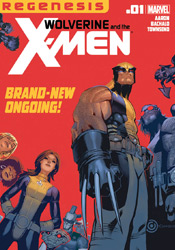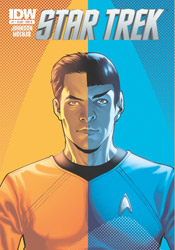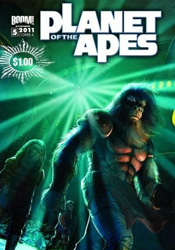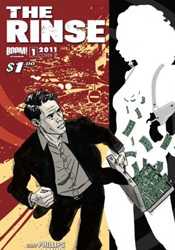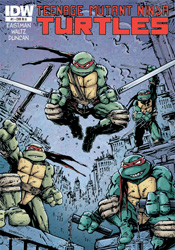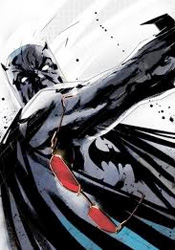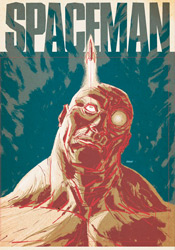
Azzarello's writing in this premiere already has a lot of meat. His vision of a pollution-smeared, technologically advanced future is as much a viable prediction as it is a fully functional backdrop for the tale he's got in store. While the poverty-ridden lower class (in which our protagonist counts himself a member) may enjoy the kind of astonishing personal technology that would make Apple blush, they do so in squalor and despair, beneath a muted gray skyline. While the local drug dealers now accept wireless debit cards, the dollar in the accounts they're pilfering effectively halves in value several times a week. Like many timeless sci-fi classics, Azzarello's climate marries modern concerns with a distant future that's just different enough from our own to remain a fantasy.
The primary storyline is just getting rolling by the time the back cover rolls into sight - par for the course where half-sized, budget-priced premiere issues are concerned - but already it's clear that there's plenty going on. There's something not quite human about the spaceman himself, who's never given a proper name, although he shows all the signs of just such a condition. He routinely gives in to vice, scarcely making enough time to earn the bucks for tomorrow's fix, and often fades off into memories (or are they daydreams) of an outer space lifestyle left far behind. This puzzle's pieces are twisting and turning with no obvious rhyme or reason at the moment, but if I look closely enough I can tell there's a gorgeous tapestry waiting to come together.
As usual, Eduardo Risso's artwork proves the perfect compliment to his partner's visions, no matter how elaborate. His clever use of perspective and carefully limited linework gives the landscape every bit of justice it deserves, while keeping the page cleanly navigable. His character designs, boiled down to the essence of each individual, are only further steps in that same direction. Our cast is easily identifiable by just the second page, and it's astonishing how much character Risso can imbue with only a few sharp strokes. His gritty, unwashed style makes no effort to conceal the world's warts, blemishes and shortcomings, which makes it a terrific match for the tone and nature of this kind of story.
Eventually these two may overstep their bounds, perhaps when they tire of dark skies, angry grimaces and gun barrels, but that's neither here nor now. Spaceman is another smash hit for the duo, brilliantly fleshed out but still quick, easy and entertaining to read. It's got instant, pulpy substance, what looks to be a twisting, turning central mystery and a dark, cloudy distant past that's screaming for further investigation. At full price this would've been worth a strong recommendation, but for a dollar it's criminal to leave it on the shelves. Buy it without a second thought - what have you got to lose?
Overall Score: 9.5
